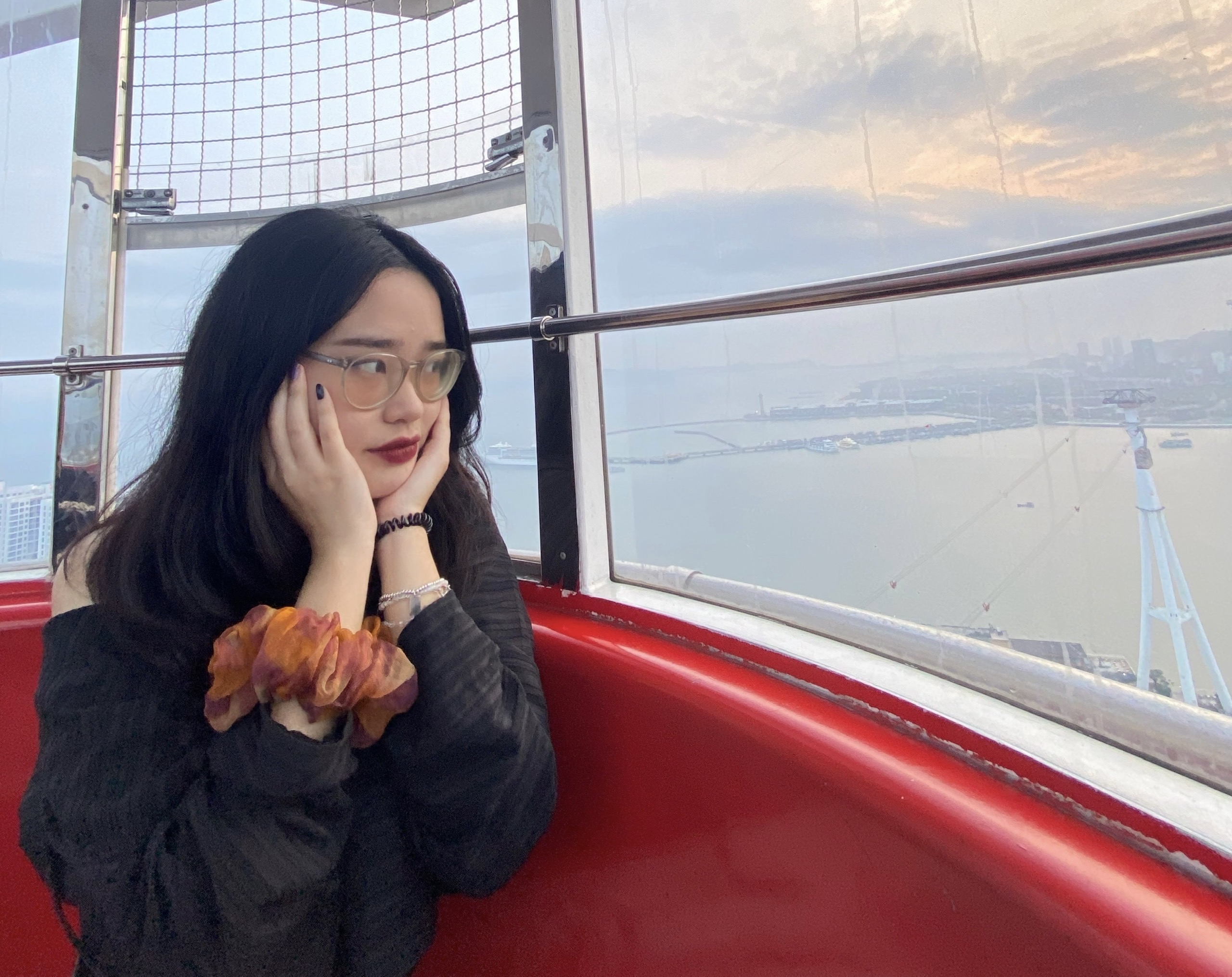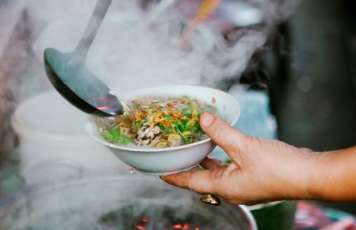
An unforgettable culinary exploration in Hanoi: The secret of traditional Bánh Rán
- on Nov 19, 2024 By: Phuong Mai NGUYEN
In the bustling streets of Hanoi, in the heart of the Dong Da district on Thai Thinh Street, lies a hidden culinary gem that has captivated both locals and travelers alike: a modest bánh rán (Vietnamese donut) shop. This Vietnamese fried and sweet delicacy has found its place as a must-visit destination for street food lovers in Hanoi.
This small, unassuming shop, tucked between two businesses, has earned a reputation as one of the best spots to savor traditional Vietnamese flavors. With an impressive daily sale of 7,000 to 10,000 bánh rán, generating a remarkable turnover of 50 million VND per day, it offers a truly immersive experience in the rich tastes of Vietnam's street food culture.
A recipe passed down through generations
.jpg)
The establishment is run by 30-year-old Nguyen Quoc Khanh, the heir to a family recipe passed down through generations. Although bánh rán is a simple dish, it requires meticulous craftsmanship and careful attention to ingredient quality. Khanh, staying true to the recipes handed down by his ancestors, has managed to modernize some techniques and adjust the flavors to appeal to a broad audience while preserving the authenticity of this traditional treat. One special trait of his donuts is the use of honey from Moc Chau, a mountainous region in Vietnam known for its high-quality sugarcane honey, which gives the treat a sweet and natural flavor, far from the industrial versions.
A unique encounter of flavors
This establishment offers Vietnamese donuts in two versions—bánh rán đường (sugar-coated donuts) and bánh rán mật (honey-glazed donuts), which are classic Vietnamese street food, often enjoyed as a snack or during afternoon tea. The sugar-coated version is particularly popular on hot summer days, while honey-glazed is a delightful winter treat that warms the heart. The Moc Chau honey used in the recipe is a rarity in Hanoi, and its sourcing process ensures top-notch quality. This honey is carefully selected for its natural sweetness and ability to melt harmoniously onto the bánh rán, creating a perfect crust while maintaining a smooth texture inside.

The magic in the cooking process
The process of making these donuts goes beyond just a cooking technique; it is a true art of frying that requires patience, precision, and a deep understanding of the ingredients. Every step of the preparation, from making the dough to the final coating, contributes to the magic of this iconic Vietnamese street food.
The dive into hot oil
The process begins with preparing the dough, a delicate mixture of flour, sugar, and water, which must be perfectly homogeneous. The dough is then divided into small balls, about the size of a walnut, ready to be submerged in hot oil. This first contact with the oil is crucial: the oil temperature must be ideal to ensure the bánh rán cooks evenly. If the temperature is too low, the dough will absorb too much oil, becoming greasy and heavy. Conversely, if the oil is too hot, the outside of the bánh rán may brown too quickly while the inside remains raw, which would result in a failed dish.
Timing is critical. The chef must immerse the dough balls into the oil with great precision and carefully control the flame to maintain consistent heat throughout the cooking. This meticulous temperature control ensures that each bánh rán is perfectly cooked: golden and crispy on the outside, but soft and airy on the inside. This delicate balance between the crunchy exterior and tender interior is the secret to the unique texture of this treat.
Frying: A pivotal moment for appearance and texture
Once immersed in hot oil, the dough balls begin to slowly puff up, taking on a round and golden shape. Constant heat adjustment is vital to prevent the dough from bursting or deforming, which could alter the appearance and texture of the final product. The bánh rán must puff up evenly, requiring careful monitoring of the oil temperature and a delicate movement of the fryer to flip them at the perfect moment. This careful attention creates a golden and perfectly fried crust that contrasts pleasantly with the inside, which remains soft and airy due to the even puffing of the dough.
One distinctive feature of bánh rán frying lies in the movement of the oil that envelops the dough. The fryer must be large enough to allow for deep cooking, where each piece floats freely, browning without sticking to one another. This gives each bánh rán a crunchy outer texture, while the inside remains light, without excess oil.
Final coating: The step that makes the difference
Once fried to perfection, the donuts are carefully removed from the oil and placed on a rack to drain any excess oil. However, the real magic lies in the final coating, a step that requires both speed and precision. The chef dips each hot donut into a bath of melted sugar or liquid honey, depending on the recipe chosen.
For instance, Moc Chau honey is poured at the ideal temperature, and quickly, each donut is coated with a thin, glossy layer of honey. This step must be executed with great dexterity to ensure each piece is evenly coated, without excess, so that the sugar or honey adheres perfectly to the surface. If the coating is too thick, it could make the cake feel heavy; if too light, it would lose its sweetness and texture. This perfect balance is what gives bánh rán its unique flavor and irresistible texture.
The secret to success
"Although this process may seem simple, it requires a rare expertise. The precision of the temperature, cooking time, and coating method are steps that make all the difference between an ordinary bánh rán and a perfect one," says Nguyen Quoc Khanh. It is this technical mastery that is the true secret to the popularity of this dessert, which delights not only the people of Hanoi but also tourists seeking an authentic and memorable culinary experience.
"Each donut that comes out of the fryer, each coating gesture, is a small culinary masterpiece, made with care and passion," explains the young owner. This is what makes this dessert, although humble, a true symbol of Vietnamese street food and a gastronomic experience in itself for those who are tempted by this delicious and indulgent tradition.

A hidden yet highly popular spot
Despite its modest size and discreet location in a small street in Hanoi, the restaurant of Nguyen Quoc Khanh has built a strong reputation and gained undeniable popularity. It perfectly embodies the essence of Vietnamese street food, a place where simplicity meets authenticity and where every detail contributes to the culinary experience. It’s no coincidence that this small establishment has become a must-visit for locals as well as international tourists seeking an authentic dining experience.
A quiet street, an undeniable success
The sign of this restaurant, barely a meter wide, can easily go unnoticed by passersby. Situated on a quiet, less frequented street, it might initially appear anything but welcoming for a popular restaurant. However, it is precisely this subtlety that adds to its charm. Unlike more ostentatious restaurants, Nguyen Quoc Khanh's establishment is appealing in its simplicity, almost hidden from view. It’s in this modesty that it finds its true strength, drawing in curious passersby with its irresistible aroma of bánh rán. The warm, sweet scent acts like a magnet, enticing people to stop and indulge in a delightful treat, even those who hadn’t planned to.
The lines of people: A sign of quality and popularity
Starting at around 3 PM, a typical scene unfolds in front of the restaurant: queues that grow longer as customers arrive. Though the wait can sometimes last over an hour, the patience of food lovers never wanes. They know that behind this wait lies a true culinary delight. These lines, which almost seem to grow organically, have become an integral part of Hanoi’s daily landscape, a spectacle that reflects the growing popularity of this place. It is here that people come to taste an authentic product, a dessert that makes the city proud.
The experience of waiting itself becomes part of the adventure—a ritual for both Hanoi locals and tourists. Those in line gladly share stories, discuss the flavor of the bánh rán, and enjoy the lively atmosphere which is characteristic of Hanoi’s popular neighborhoods. In essence, this restaurant has become much more than a place to eat; it’s a true social space, where locals gather and tourists immerse themselves in local culture.
Locals and tourists united by Bánh Rán
While this small restaurant is beloved by the people of Hanoi, it also attracts an increasing number of international visitors. Many tourists, eager to experience the authenticity of Vietnamese cuisine, seek out this culinary experience that connects them to the local culture. They are willing to wait in line for minutes, sometimes even hours, to taste these renowned bánh rán. The wait is not seen as a burden but as an essential part of the gastronomic adventure, a rite of passage to savor this treat straight from the soul of the city.
Tourists who discover this unique spot may feel a deep connection to Vietnamese culture, not only through the flavors of the dishes but also by becoming part of this vibrant street food scene, typical of Hanoi. It’s an opportunity to experience something authentic, to absorb the daily rituals of the city’s residents, all while enjoying dishes prepared using methods passed down through generations.
A place of tradition and modernity
Nguyen Quoc Khanh's shop is much more than just a food establishment. It represents the soul of traditional Vietnamese cuisine in a decidedly modern setting, where values of conviviality, simplicity, and sharing are emphasized. It’s a place where generations intersect, a space for exchange between the young and the old, where childhood memories blend with the dreams of foreign travelers. Perhaps this is one of the secrets to its success: its authenticity, its refusal to be swept up in fleeting trends, and its ability to create a genuine community around a shared love of food.
In a world where people often seek fashionable and ephemeral places, Nguyen Quoc Khanh’s restaurant is a breath of authenticity—a testament to the resilience and true nature of small family-owned businesses in Hanoi. That is what sets it apart: a hidden yet highly frequented place that brings people from all walks of life together around a love for Vietnamese cuisine, in its purest and most delicious form.
A delicious break to share
The bánh rán, with their generous size (about the size of a palm), are perfect for a quick snack. One or two are enough to satisfy your appetite, and their affordable price (6,000 VND each) makes them an ideal option for travelers looking to explore the local cuisine without breaking the bank. The combination of the sweet or honeyed crust and the savory mung bean filling offers a sweet and satisfying experience.
This restaurant, beyond its exceptional bánh rán, embodies the spirit of Vietnamese street food: simple, generous, and deeply rooted in local traditions. If you visit Hanoi, don’t miss this address, where you can taste a popular specialty that remains rare and hard to find elsewhere in the city. It’s both a culinary and cultural experience, a true invitation to discover the richness of Vietnam’s flavors.
TOLUNHA
Related articles:
>> Top Hanoi must-try dishes and best places to eat in Hanoi Old Quarter
Comment
Other Blog
Categories
Latest News
on 31 Dec, 2025
on 31 Dec, 2025
 Español
Español Français
Français




















Morgane Ter Cock
on Dec 18, 2025HerbertPhomaMS
on Oct 19, 2025Lilyan Cuttler
on Oct 15, 2025Avenue17XC
on Sep 14, 2025Avenue18JL
on Jul 21, 2025